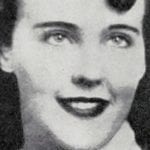 Weird Stuff
Weird Stuff  Weird Stuff
Weird Stuff  History
History 10 Legends Whose Last Moments Undid Their Glory
 Health
Health 10 Futuristic Ideas to Treat Common Medical Problems
 Weird Stuff
Weird Stuff Ten Surreal Attempts to Reverse Baldness
 Facts
Facts 10 U.S. Government Contingency Plans for the Unthinkable
 History
History 10 Weird Distractions from the Great Depression
 Movies and TV
Movies and TV 10 Fictional Kings Who Go from Good to Bad
 Food
Food The Fantastic Chemistry Behind Why 10 Popular Foods Taste So Good
 Technology
Technology 10 Futuristic Fungal Technologies
 History
History 10 Not-so-Spooky Events That Also Happened on October 31
 Weird Stuff
Weird Stuff 10 Things So Rare They’ve Only Been Found Once
 History
History 10 Legends Whose Last Moments Undid Their Glory
 Health
Health 10 Futuristic Ideas to Treat Common Medical Problems
Who's Behind Listverse?

Jamie Frater
Head Editor
Jamie founded Listverse due to an insatiable desire to share fascinating, obscure, and bizarre facts. He has been a guest speaker on numerous national radio and television stations and is a five time published author.
More About Us Weird Stuff
Weird Stuff Ten Surreal Attempts to Reverse Baldness
 Facts
Facts 10 U.S. Government Contingency Plans for the Unthinkable
 History
History 10 Weird Distractions from the Great Depression
 Movies and TV
Movies and TV 10 Fictional Kings Who Go from Good to Bad
 Food
Food The Fantastic Chemistry Behind Why 10 Popular Foods Taste So Good
 Technology
Technology 10 Futuristic Fungal Technologies
 History
History 10 Not-so-Spooky Events That Also Happened on October 31
10 Tragic Cases of Missing Children
Children are precious. A parent’s love for their children is unparalleled, so when a child goes missing it destroys the lives of those parents who loved and cherished their offspring so dearly, and often captures the undivided attention of a whole country, or even the world. This list takes a look at 10 tragic cases of missing children. For obvious reasons, the word ‘top’ has not been included in the title as each one of these is as heartbreaking and catastrophic as the next.
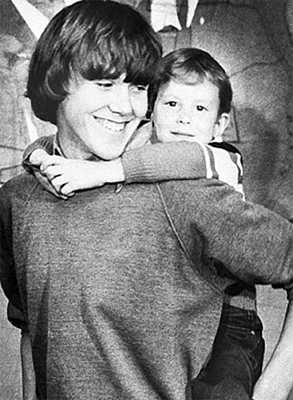
Steven Gregory Stayner (April 18, 1965 – September 16, 1989) was an American kidnap victim. Stayner was abducted from the Central California city and county of Merced, at the age of seven and held until he was 14, when he escaped and rescued another victim, Timothy White, in 1980. Stayner died in 1989 in a motorcycle accident while driving home from work. On the afternoon of December 4, 1972, Steven Stayner was approached on his way home from school by a man named Ervin Edward Murphy, an acquaintance of Kenneth Parnell. Murphy, described by those who knew him as a trusting, naïve and simple-minded man, had been enlisted by convicted child rapist Parnell (who had passed himself off as an aspiring minister to Murphy) into helping him abduct a young boy so that Parnell could “raise him in a religious-type deal,” as Murphy later stated. For years Parnell abused Steven and told him that he had legally adopted him. As Steven entered puberty, Parnell began to look for a younger child to kidnap. On February 14, 1980, Parnell and a teenage friend of Steven’s, named Sean Poolman, kidnapped five-year-old Timmy White in Ukiah, California. Motivated in part by the young boy’s distress, Steven decided to escape with him, intending to return the boy to his parents and then escape himself. The two boys were picked up by the police and Steven told them the whole story. Steven’s life was the basis of the 1989 miniseries “I know my first name is Steven”.

Fusako Sano is a Japanese woman who was kidnapped at age nine by Nobuyuki Satō, and held in captivity for nine years and two months from November 13, 1990 to January 28, 2000. In Japan, the case is also known as the Niigata girl confinement incident. Fusako Sano, then a fourth grade elementary school girl, disappeared on November 13, 1990, at age nine, after watching a school baseball game in her home town of Sanjō, Niigata Prefecture, Japan. A huge police search failed to find the missing girl. Police even considered the possibility that she had been kidnapped by North Korean intelligence operatives. She had been kidnapped by Nobuyuki Satō, then a 28-year-old mentally disturbed unemployed Japanese man, who forced her into his car, and subsequently held her in the upstairs floor of his apartment in a residential area of Kashiwazaki, Niigata Prefecture, for 9 years and two months. The house is only 200 meters from a kōban (police substation), and 55 kilometers from the location where she was kidnapped.
While Sano was initially scared, according to her own statements she eventually just gave up and accepted her fate. Allegedly, the kidnapper kept her tied up for several months, and used a stun gun for punishments if she did not videotape the horse racing on TV. Sano was also threatened with a knife and beaten. Her kidnapper shared his men’s clothes with her and gave her food three times per day, either instant food or meals cooked by his mother, who lived downstairs in the apartment. He also cut Sano’s hair. Since there was no bath or toilet upstairs where Sano was confined, she was only able to take a bath infrequently, when permitted by her captor. She spent most of her time in captivity listening to radio, and reportedly was allowed to watch TV only in the last year of her ordeal. While the door was never locked, Sano did not take a step outside for nine years. She later told the police: “I was too scared to escape and eventually lost the energy to escape.”
The mother of Nobuyuki Satō, then 73 years old, consulted the Kashiwazaki public health center in January 1996, because her son had been acting strangely and was violent to her. She called again on January 12, 2000, and again on January 19, requesting a visit to her home. Officials finally visited the home on Friday, January 28, 2000. Subsequently, Satō caused a disturbance that resulted in police being called to the scene. On this occasion, Sano, by then 19 years old, approached the officers and identified herself.
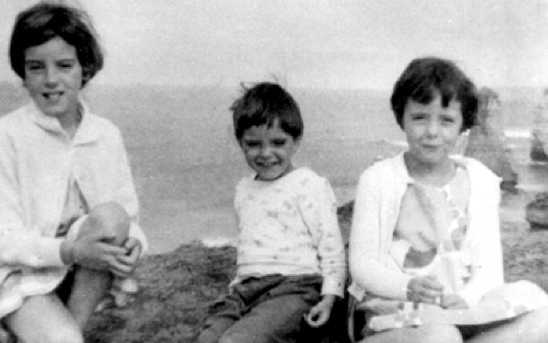
Jane (aged 9), Arnna (aged 7) and Grant Beaumont lived in Adelaide, Australia in the 1960s. Their house on Harding Street was minutes away from the popular beach resort of Glenelg, a tourist hotspot home to numerous attractions, hotels and restaurants. Like many other Adelaide residents, the children were fond of the beach at Glenelg and, perhaps due to the innocence of the period and the maturity of Jane, their parents had no qualms about them visiting on their own, as long as they took the 5 minute bus ride from their house to the resort. On 26th of January, 1966, the children left the house at 10am and were never seen by their parents again.
Eye witness statements confirmed that the children at least arrived at their destination as they were spotted at the beach with a tall blonde man. The children appeared to be in no distress and were reportedly enjoying themselves in his company. The eldest child, Jane, was also seen buying a meat pie from a beachside shop with a £1 note. This seemed odd, however, as not only had the children never bought such an item in any of their previous trips, their parents had not given them this amount of money upon departing the house earlier on in the day. The final confirmed sighting of the children was by a postman at 3pm that day. The postman knew the children well and stopped to talk to them. He reported that although they were heading in the general direction of their house, they did not seem to be in any sort of hurry or concerned that they were already 3 hours late. A creepy footnote in the case is the fact that, prior to their disappearance, Arnna had told her mother that Jane had gotten a ‘boyfriend’ down at the beach. The mother, understandably, assumed this to be a young playmate, but in hindsight it supported the theory that the children had encountered their abductor at least once before.
There are numerous suspects for the murder of the Beaumont children, although none have ever been proven guilty. The strongest of these suspects is Bevan Spencer von Einem, an apparent member of a high society gentlemen’s club, who kidnapped and murdered numerous Australian children in the late 1970s and early 1980s. Von Einem is currently serving a life-sentence for the murder of an Adelaide teenager in 1984, and a credible witness (known only as ‘B’ to conceal his identity in the 1984 trial) told the police that he had also admitted to the murders of the Beaumont children. Police have been unable to prove this but von Einem would have fit the eyewitness descriptions in 1966, and was also known to frequent Glenelg.
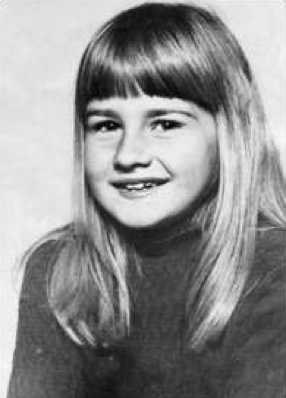
Eloise Worledge was 8 years old when she vanished from her own bedroom on January 12, 1976, in Beaumaris, Victoria, Australia. On that day, at 8.30pm, Eloise’s mother Patsy left the house for her regular ballet class and left the children (Eloise, along with her brother and sister) with their father, Lindsay. Patsy returned home at 10.30pm and went to see each of the children individually before retiring to bed herself, at 11pm. Lindsay had spent the night drinking in the house and watching television (the couple were currently going through a separation). He went to bed at 11.40pm, not realizing that the front door to the house had been left open. Patsy woke up at 07.30am to find the flywire in the window of her daughter’s bedroom had been cut and their daughter was nowhere to be seen. In a panic, Patsy ran across the road to her neighbors’ house while Lindsay called the police. The police later revealed that Lindsay’s phone call seemed strangely unemotional.
A team of 250 police officers searched for the missing child for 3 weeks but found nothing. Under further investigation it seemed that the flywire cut was not big enough for the child or an abductor to fit through, and so the most likely scenario was that Eloise had been removed through the front door. However, had the flywire cut been an intentional red-herring caused by the perpetrator?
In total, over 200 suspicious incidents were logged on the night that Eloise went missing. These ranged from noises in the neighboring area late at night, to sounds of a car door slamming and a crying child.
The case was reopened more than 20 years after the events but no clues have yet been found to indicate what happened to Eloise Worledge. The father did agree on the day of her disappearance to take a lie-detector test but this was not done until 25 years later. The results were inconclusive.
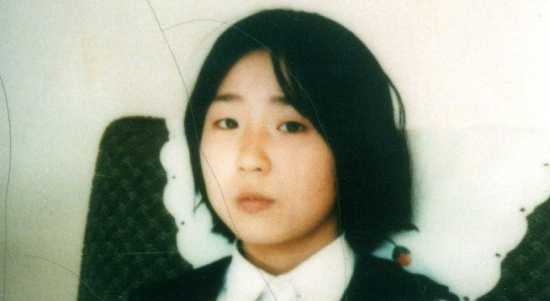
The story of Megumi Yokota is fascinating for several reasons. It begins with the disappearance of a young girl from Japan in 1977, and develops into a story of international espionage. It was a November day in 1977, when Sachi Yokota said goodbye to her daughter as she left for school and never returned. In the years following, both Sachi and her husband searched tirelessly for clues as to the whereabouts of their daughter, but uncovered absolutely nothing. A couple of years after the disappearance, Sachi and her husband Shigeru learned that Japanese residents had begun disappearing off the coast facing North Korea, and the Koreans were the prime suspects in the abductions. However, it took until 1997 for a North Korean defector to give the Yokota’s the information they had been searching for. The defector stated that Megumi had, in fact, been taken by abductors working for the North Korean government, and taken across the seas to aid in the training of North Korean spies intent on being able to blend in with the Japanese culture. However, Megumi had been taken by mistake, her real age not being realized until she was already long gone.
The story would seem like the work of someone with a very overactive imagination if it were not for the fact that North Korea admitted, in 2002, to the abduction of 12 Japanese citizens in the 1970s and 80s, Megumi being one of them. They stated that she had committed suicide at the age of 29, and returned what they said were her ashes to Japan, where DNA testing was claimed to prove the remains were not Megumi’s
The missing girl would now be in her 40s and the Yokotas continue to search for the truth of what happened to their daughter, clinging on to the belief that she is still alive, somewhere.
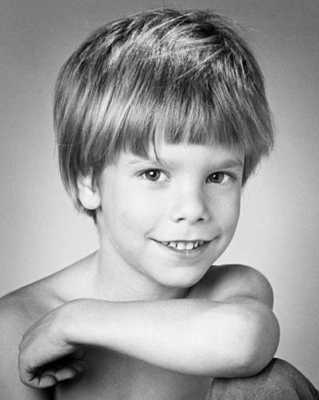
The case of Etan Patz is famous, not only for the events surrounding his disappearance, but also as he was the first missing child to have his photograph placed on the front of milk cartons across America in the hope of finding him.
On the morning of May 25, 1979, Etan Patz was sent to make his way to school from his parents’ loft apartment in the Soho district of Manhattan. Etan was well behaved, and the neighborhood was considered a safe place where everyone looked out for everyone else, so it was assumed that Patz’ journey to the school bus pick-up point would be an uneventful one. Two eye-witnesses were the last known people to see Etan as he waited at a near-by intersection to cross the road.
The police were informed when Etan did not return home, and over 100 officers scoured the area. Pictures of the boy were posted all over the city and the media jumped on the case and began reporting sightings from all over the country. One of the more credible witnesses was a person who reported seeing Etan talking to a suspicious looking blonde man near where he was last seen heading towards the bus stop.
Three years after the disappearance police got their first solid suspect in Jose Antonio Ramos. Ramos was a known pedophile who had been caught trying to lure children in to a tunnel in New York where they found child pornography containing young boys with light colored hair similar to Etan’s. Although Ramos admitted having seen Etan traveling to school before, there was not enough evidence to charge him with the crime and he was released.
Ramos was, however, rearrested in 1985, when a new prosecutor was assigned to the case. In a new round of interviews, he began to admit more and eventually admitted to attempting to take a boy fitting Etan’s description back to his apartment for sex, but eventually giving up before sending him on a subway train to visit his aunt. Ramos said that he was 90% certain that the boy was Etan after seeing his face on the news following the disappearance the following day.
Ramos is currently still in Jail on unrelated charges, and each year on Patz’ birthday, his father sends Ramos a copy of his son’s original ‘missing child’ poster with a message written on the back: “What did you do with my little boy?”
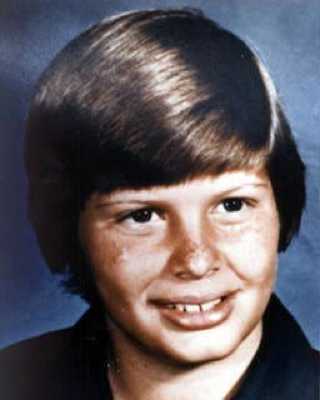
Johnny Gosch was doing his usual paper-round on Sunday, September 5, 1982, when he and his friend were approached by a man in a Ford Fairlane with Iowa plates, who asked them both for directions. Johnny later commented to his friend that the man made him feel uneasy, before heading home, apparently being followed by a different man. The parents John (or Leonard depending on which source you read) and Noreen were first alerted to something amiss when they began receiving phone-calls from disgruntled customers pertaining to their missing newspapers. After a search of the local area, John Gosch found his son’s paper-wagon two blocks from their home. Over the next couple of years, Johnny’s mother and a private investigator uncovered apparent evidence that Johnny had been sold in to a pedophile ring, something of which police were unsure, but did not immediately dismiss.
In 1997, the case took a strange twist when Noreen was apparently visited at her home by a 27 year old Johnny Gosch, who told her mother about his kidnapping but made her promise that she would not repeat this information as he was still living under danger from his abductors. Johnny’s father, however, is doubtful of the visit.
Again, in 2006, the case took another twist when photographs of a bound boy who Noreen believes to be Johnny began appearing on her doorstep. She is certain of his identity, but unidentified witnesses have come forward to say that the person in the photos is not Johnny.
The case has sparked huge conspiracy theories involving even the White House, and new information is still coming out at the time of writing.
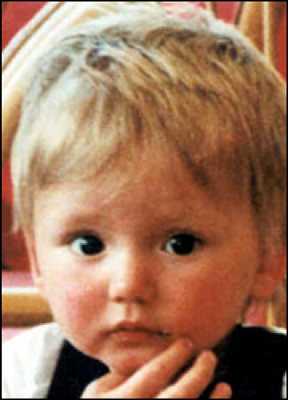
On July 24, 1991, Ben Needham was in the care of his grandparents, while his mum Kerry and her boyfriend Simon went shopping. The family were on holiday from Sheffield, England, to the Greek Island of Kos to visit Kerry’s parents who had emigrated there. According to his grandmother, Ben was playing by the front door of their recently renovated farmhouse, when she took her eyes off him for just a brief moment. However, in that time, Ben had vanished.
Ben’s family frantically searched for the child but to no avail. His mother has stated that she believes he was taken by a pedophile ring, and has criticized the Greek authorities for not working quickly enough to man airports and borders in the hope of stopping someone escaping the island with Ben. In both 2003 and 2007, photographs have been released to the public showing how Ben may look using age-progressing computer technology. However, the efforts have produced nothing of substance.
There have been over 300 reported sightings of Ben over the years, but the family seem no closer to finding him 20 years after he was last seen.
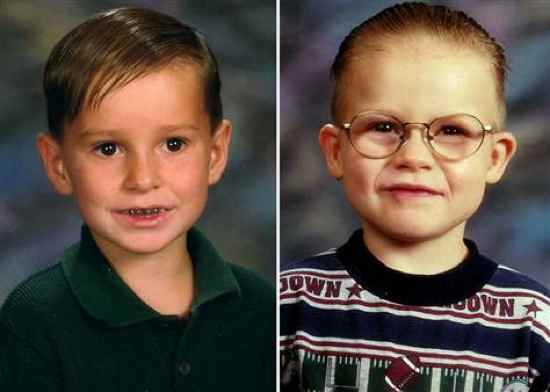
Most missing children are reported as soon as they are thought to be missing by anguished parents. However, in 2011, authorities in Colorado were notified of the disappearance of Austin Bryant. Upon further investigation, they found that Austin had actually gone missing some time between 2003 and 2005 when he would have been between 5 and 7 years old. To make things worse, his brother had also gone missing in 2001, at the age of 9 but his disappearance had also gone unreported.
Edward and Austin (biological siblings) were fostered, and later adopted, by Edward and Linda Bryant in 1999. The children had adopted 9 children in total, and as Edward and Austin were considered to have ‘special needs’, $1700 a month was awarded to the Bryants for their care. It was one of the other adoptees of the Bryants who came forward with information on the missing children in 2011, adding that they had been physically abused throughout their stay.
The Bryants are currently awaiting trial for continuing to collect the money for the care of the children, but not in connection with their disappearance. Edward and Austin remain missing.
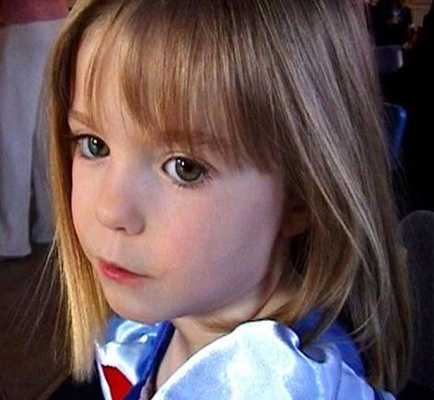
3 year old Madeline McCann went missing from the Algarve holiday resort of Praia da Luz, on 3 May, 2007, and stands as one of the most famous cases of missing children ever in Britain.
McCann’s parents, Kate and Gerry, were enjoying a meal with a group of friends while Madeline and her twin siblings were sleeping in the unlocked apartment approximately 100 meters away. The McCanns reported that the group took turns at checking on the children, and each time nothing untoward was noted, although at the last at 21:30, only the twins were seen through the door. At 22:00, Kate and Gerry McCann returned to their apartment to find the twins safe in bed but Madeline missing, and the window in her bedroom open. A huge manhunt was launched with the initial suspects being a British/Portuguese national, Robert Murat, and the McCann’s themselves, all of which were given arguido (suspect) status by the police. The investigations of the initial suspects however led to nothing.
The police initially worked under the assumption that McCann had either been kidnapped by a pedophile ring or an adoption ring, and attracted criticism, particularly from the McCann’s, for the way they handled the case. The amount of people allowed in to the apartment from which Madeline went missing, for example, was so uncontrolled as to taint the possibility of finding forensic or DNA evidence leading to the identification of the abductor.
Developments in the McCann case, no matter how small, still garner widespread media coverage.






